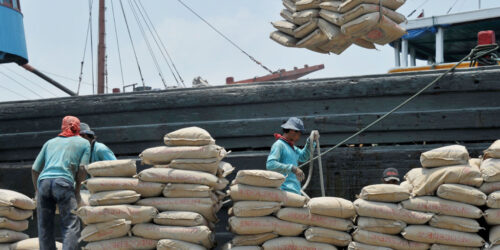There are few things that can put a dampener on the cement industry’s very ceremonious year so far and what does seem as one of the many prosperous years to come. Cement companies should be very happy with themselves. Despite the dark clouds of Covid-19, the sector—bolstered by government policies—has sold more cement than ever before and still has 16 percent more capacity left to consume.
After going through an expansion phase that was only recently completed, the industry is revving for another capacity enhancement spree (potentially going up to 100 million tons) as it expects to grow 10-15 percent annually over the next few years. This expectation will materialize on the back of some compelling demand metrics.
So far, the industry has sold about 52 million tons of cement (in 11MFY21, they are up 21% yoy), of which 18 percent was exported via sea routes and road transport. During the period to date, the industry sold the highest volumes for the first time in the months of Oct-20 and Mar-21 crossing 5 million tons, which as it stands has become a new benchmark for growth in upcoming months.

But the existing growth is almost organic as much of the work from new projects under Naya Pakistan Housing Program (NPHP) has only just started. Industry leaders say this demand will materialize soon as these projects have only just hit the ground running. As construction begins, the demand in the housing industry would catapult requiring more cement output than ever before. Meanwhile, construction of Special Economic Zones (SEZs) and nearly eight hydro power projects in addition to Diamer Bhasa will add demand further in the years to come.
The excess cement—after fulfilling domestic needs—is sold to exporting markets. Over the past two years, clinker has become precious for markets abroad and cement companies in the south have ramped up production to meet the needs. Though clinker is priced lower than cement, it keeps the roads open for cement firms to keep producing maximum capacity. Despite shipping concerns and vessel shortages over the past year due to covid-19, cement exports have persevered. Growth has been higher overseas than those cement bags that have been going cross-border to Afghanistan but there is an emerging opportunity here in the form of the opening of a direct road link to Uzbekistan through the signing of Transport Internationaux Routier (TIR) which is a multilateral treaty that entails no payment of Customs duties and taxes on the route. Exports here in Pakistan can tap that market and be competitive.
The construction package, the housing program, reduced policy rate and multiple concessionary financing schemes on the consumer side (in the form of housing mark-up subsidy) as well as firm side (in the form of TERF facility which has been availed by expansion-forward cement makers) are all multi-layered government sweeteners, emblematic of where the government sees easy growth coming from. Nothing, not even a pandemic, seems to be standing in the way of it.






